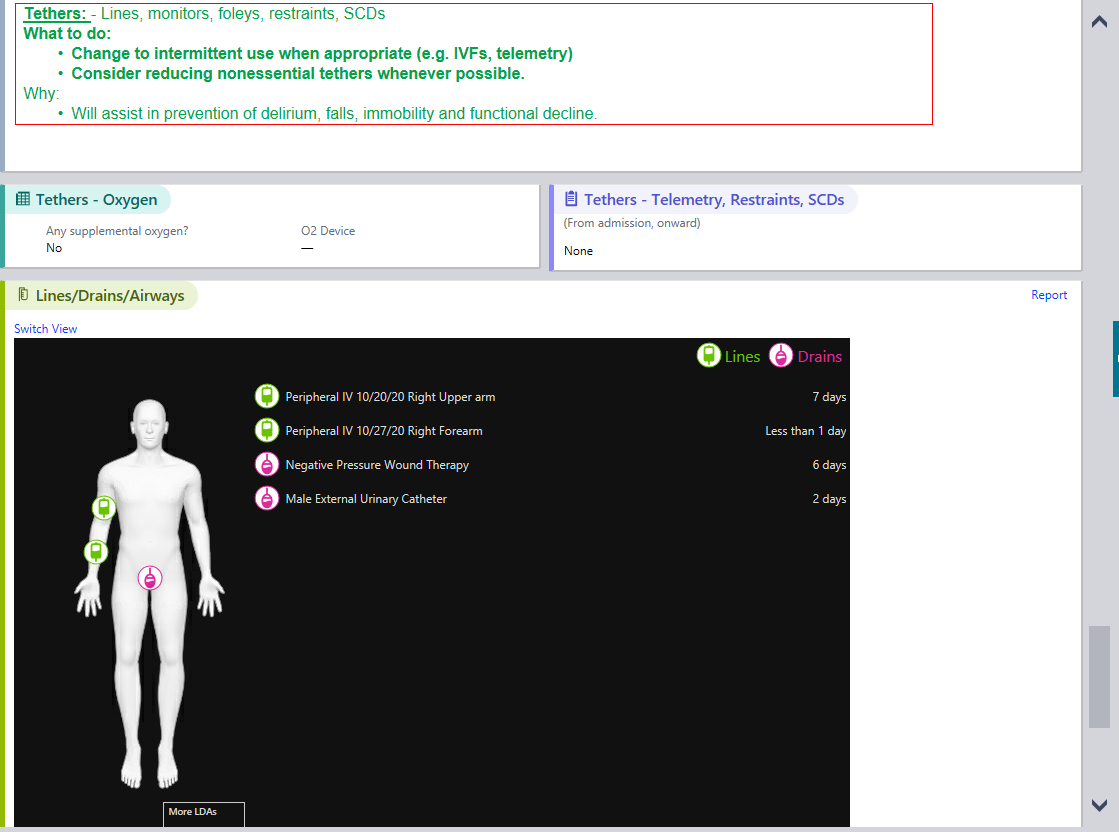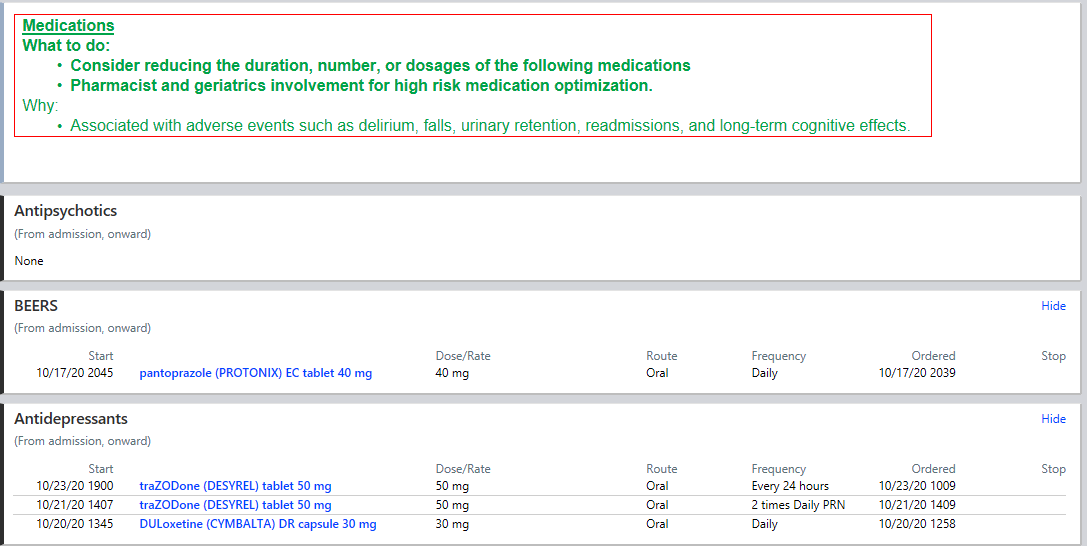A novel, EHR-based tool developed at Duke aids clinicians in assessing the condition of hospitalized older adults and offers recommendations for changes in care that is designed to improve outcomes, help prevent common complications, decrease hospital length of stay, and decrease readmission rates.
The Systems Older Adult Report (SOLAR) panel was inspired by the concept of acute care for the elderly (ACE) units, in which all care for older patients occurs on one hospital floor with collaboration among physicians, nurses, occupational and physical therapists, pharmacists, speech and language pathologists, and other clinicians who are attending to patients’ needs.
The SOLAR panel is integrated with a patient’s EHR, collecting data, identifying risk factors, and making recommendations to clinicians. Recommendations can involve deprescribing certain medications, mobilizing a patient, advancing a patient’s diet, or ancillary consults such as nutrition or wound care. Any clinician involved in a patient’s care can access the tool, making it similar to a “virtual” ACE unit.
“This tool is one of the ways Duke has been working to better stratify risk from a population health perspective and determine which patients are at higher risk for poor outcomes in geriatric domains,” says geriatric medicine specialist David M. Schlientz, MD.
Two parts to the SOLAR panel
Schlientz explains there are two parts to the SOLAR panel: a summary report for an individual patient that identifies risk factors, which are automatically drawn from charted data, and a system list—a population health-oriented list that identifies all inpatients at Duke hospitals over age 65. The system list contains sortable data on each currently hospitalized older patient, including:
- Bedside Mobility Assessment Tool (BMAT) score
- Nursing Delirium Screening Scale (NuDESC) score
- Number of medications patients are taking that are included in the Beers Criteria for Potentially Inappropriate Medication Use in Older Adults
- Number of antipsychotic or antidepressant medications patients are taking
- Estimated Readmission Risk Percentage
Using the system list, providers and geriatric resource nurses can quickly identify patients who are at higher risk for poor outcomes during hospitalization and arrange for changes to treatment plans, consults with various providers, and referrals to available resources.
Mobility section displays activity orders, pain scores
One of the SOLAR panel components Schlientz finds particularly useful is the section on mobility—a critical factor to consider in a patient’s recovery. The tool displays current activity orders, BMAT status, physical and occupational therapy orders, pain scores, and all recent provider notes from physical and occupational therapy.
“If a patient doesn’t have an activity order or has a strict bedrest-only order, the SOLAR panel helps us assess whether the patient still needs bedrest or consider that it might be a holdover from a previous shift that’s no longer necessary so we can advance their activity level,” he says.
Avatar of patient illustrates tethers
Part of the mobility section in the tool is an avatar of a patient with a diagram of all tethers, which the SOLAR panel derives from the patient’s EHR. Tethers that might not be readily visible—such as IVs, oxygen lines, compression devices, and catheters—are displayed on the patient avatar, prompting clinicians to consider whether any of them can be removed to aid in a patient’s mobilization.

Another helpful component of the tool is its ability to identify patients who are using a large amount of narcotic pain medications. This information challenges clinicians to ask whether more attention should be paid to nonpharmaceutical ways to treat a patient’s pain or consider whether a patient would benefit from a consult with a chaplain, a wellness visit, or increased activity to help them manage their pain.
“The SOLAR panel lets us view the overall status of our patients at any time in one electronic location. It allows us to see our patients through a geriatrics lens and identify and address issues specific to this patient population,” says Schlientz.
